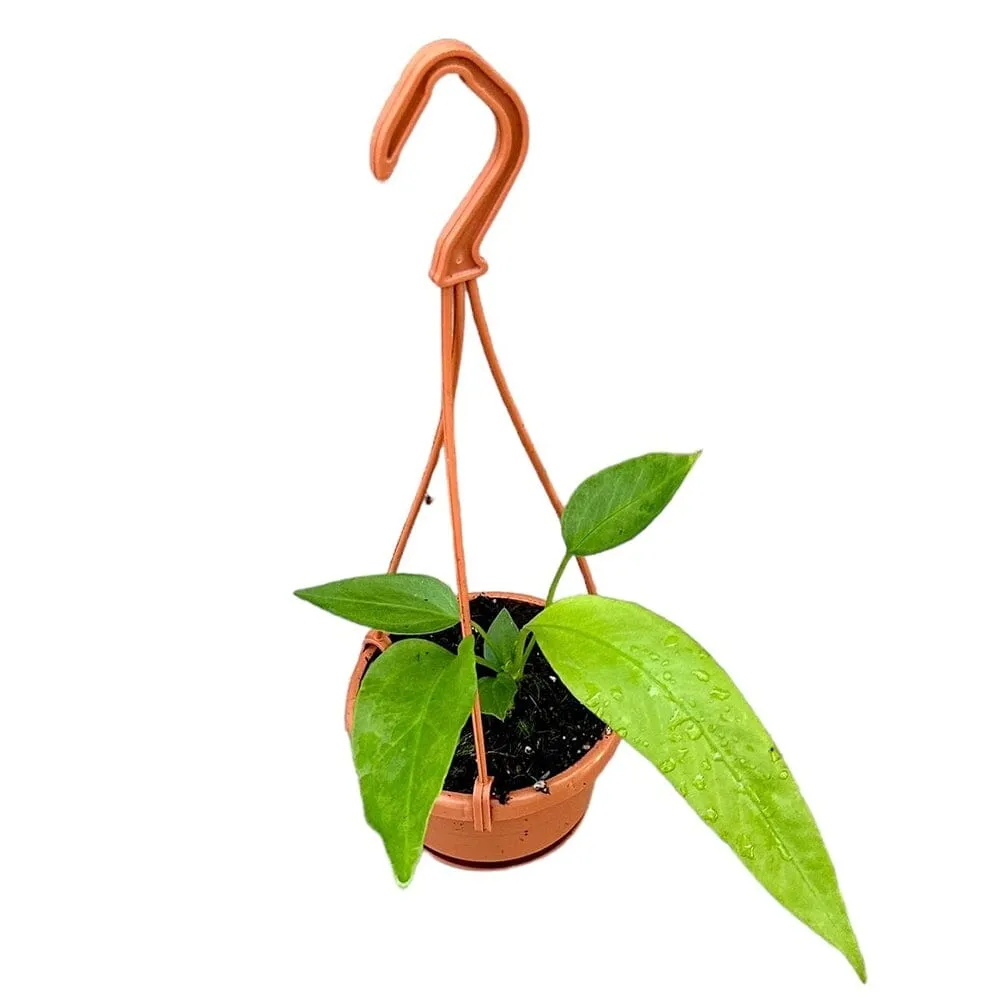Anthurium vittarifolium is a stunning plant that belongs to the Araceae family. Native to Colombia and Ecuador, this plant is highly sought after for its unique appearance and velvety foliage. It features elongated, strap leaves that are thick and have a leathery texture. The leaves are a deep green color and have prominent veins running through them, adding to its distinctive beauty.
Light: Anthurium vittarifolium thrives in bright, indirect light. Avoid placing it in direct sunlight as it can scorch the leaves. A north or east-facing window is ideal for this plant. If you notice that the leaves are turning yellow or pale, it may be an indication of too much sunlight, and you should move it to a slightly shadier spot.
Temperature: Anthurium vittarifolium prefers average to warm temperatures ranging from 65¬?F to 80¬?F (18¬?C to 27¬?C). It is important to keep this plant away from drafts or sudden temperature changes, as it can negatively impact its growth.
Humidity: This plant thrives in high humidity environments. Mist the leaves regularly with water or place a tray with water near the plant to increase humidity levels. You can also use a humidifier to maintain the desired humidity level of around 60% to 70%. If the surrounding air is too dry, the plant may develop brown leaf tips.
Watering: Anthurium vittarifolium prefers consistently moist soil but not waterlogged conditions. Water it thoroughly when the top inch of soil feels dry, allowing excess water to drain out. Ensure the pot has drainage holes to prevent waterlogging, which can lead to root rot. During the winter months, reduce watering frequency slightly to accommodate slower growth. Avoid using cold water as it may shock the plant. Instead, use room temperature water or allow tap water to sit for 24 hours to remove chlorine.
Soil: Use a well-draining potting mix that retains moisture. A mixture of peat moss, perlite, and orchid bark or coconut coir will provide the ideal balance of drainage and moisture retention. Avoid using heavy soils that can retain excessive moisture and lead to root rot.
Fertilizer: Anthurium vittarifolium benefits from regular feeding during the growing season (spring and summer). Use a balanced liquid fertilizer diluted to half strength every two to four weeks. During the dormant winter period, reduce or cease fertilization as the plant's growth slows down.
Pruning: Remove any yellow or damaged leaves promptly to maintain the plant's health and appearance. Anthurium vittarifolium does not require extensive pruning, but you can trim back leggy or excessively long stems to encourage bushier growth.
Propagation: The most common method of propagation for Anthurium vittarifolium is through division. Carefully remove the plant from its pot and separate the rhizomes, ensuring each division has healthy roots. Plant the divisions in separate pots with well-draining soil and provide them with the same care as mature plants.
Pests and Diseases: Anthurium vittarifolium is generally resistant to pests, but it can occasionally attract aphids, mealybugs, or spider mites. Regularly inspect the leaves for any signs of infestation, and if detected, treat with an appropriate insecticidal soap or neem oil. Proper ventilation and good plant hygiene can help prevent pest issues. Additionally, ensure the plant is not exposed to cold drafts or temperatures below 60¬?F (15¬?C) to avoid potential diseases like root rot.
With proper care and attention, Anthurium vittarifolium can thrive and become a stunning addition to your indoor plant collection. Its unique foliage and relatively low maintenance requirements make it a popular choice among plant enthusiasts.















